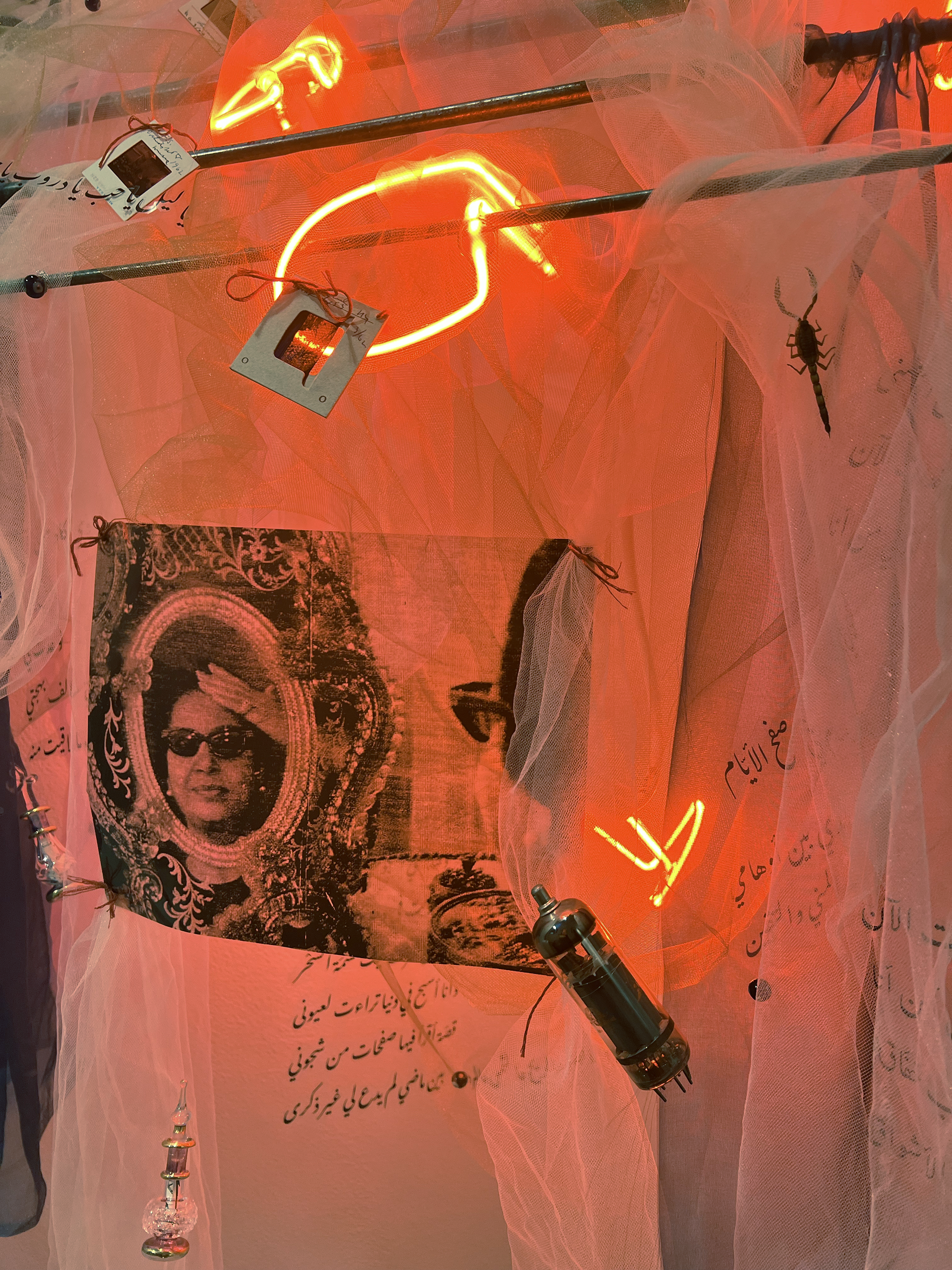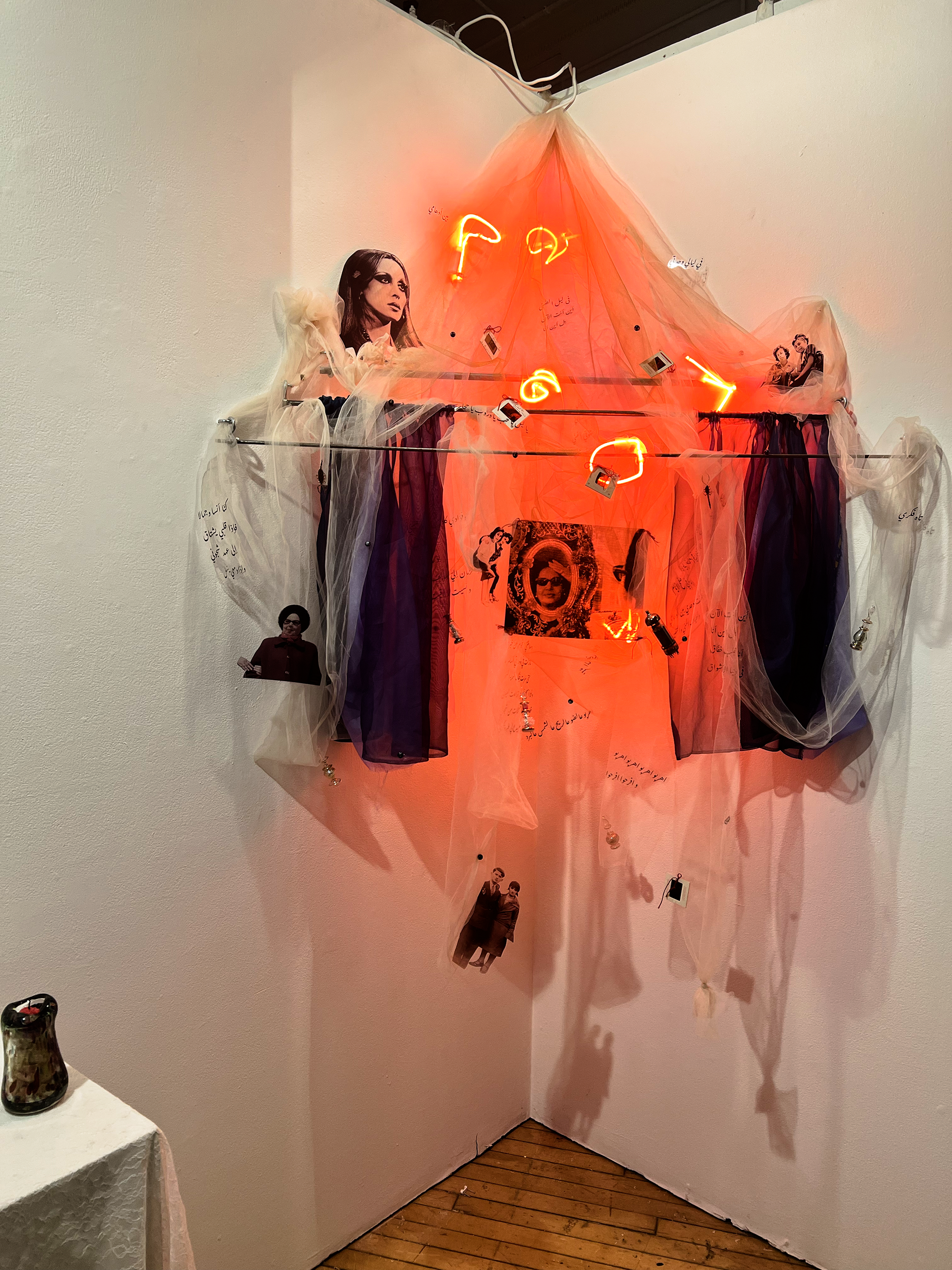


The root system of the Arabic language refers to a three or four consonant base-word which represents a core meaning or concept.* I have found a fascination in excavating the roots of common words that I otherwise would have not thought to connect. I learned that a root can branch into words that by definition, have no relation, but when traced back to their simplest form, can reveal anthropological significance. For this show, I fell in a wormhole exploring the root of my name, jnn.
I found myself lost in the echo of dualities, caught in a match of disdain and solace. How could I learn to accept my extremes, and allow them to coexist? Veiled behind a filter of simplicity, little did I know the biggest duality of all existed within my own name.
This piece follows the mythological stories and tropes of the jinn, beings of a smokeless flame, that are often associated with mental illness, poetry, the menstrual cycle and dreams. The story goes, to each of us belongs a counterpart (qareen, from the root q-r-n | horn), who inhabits the imagination realm (a’alam al-mithal). “Inherently ambiguous, containing elements of both the spiritual and corporeal worlds and including opposite qualities. It is the place where the unseen takes on visible form, which is also the soul, the intermediary between body and spirit; it is woven of imagination. The jinn today serve as commentators on the cultural, psychological, and spiritual; dimensions of the self.” * Similar to the shadow or anima, the jinn can possess, protect or heal. They have autonomy and volition, and are capable of assuming human or animal form (most commonly snakes, scorpions and dogs). They are symbols of fiery and uncontrolled passion and instinctive drives. The way we relate to them is indicative of our fears and projections in everyday life. “As qareen or companion, the jinn provide a powerful means of communication with the realm of imagination, the fountain of all our hopes, aspirations, and creative desires.”*
Each element in this installation was meticulously curated and intentionally placed within the piece. Materials include:
Neon: 6 neon units. Arabic letters M-J-J- O- N-N (م ج ج ن و ن) permutations of the root jnn. I chose to include neon as a core element in this installation because of the hypnotic qualities that neon pieces possess. Like a moth to a flame, the neon magnetizes spectators in a hypnotically eery way. The pieces are pumped with neon gas; red in homage to jinn's associations with the color.
Preserved scorpions:
Snake Skin (encased in glass & sealed with wax):
mixed tulle:
Found photo negatives:
Archived photography on acetate:
Found radio transformer:
Music box:
Egyptian glass perfume bottles: In tribute of the genie trope that branched from jinn mythology, the bottles are filled with Islamic protection verses.
Glass beads and iron rods: Each adding a layer of protection against evil jinn, as they are known to fear the evil eye and iron alike.
Arabic song lyrics:
This project was exhibited as part of the Allegory of Tongues BFA Thesis show.
*NASSER, LANA. “The Jinn: Companion in the Realm of Dreams and Imagination.” Dreaming in Christianity and Islam: Culture, Conflict, and Creativity, p. 144-152.